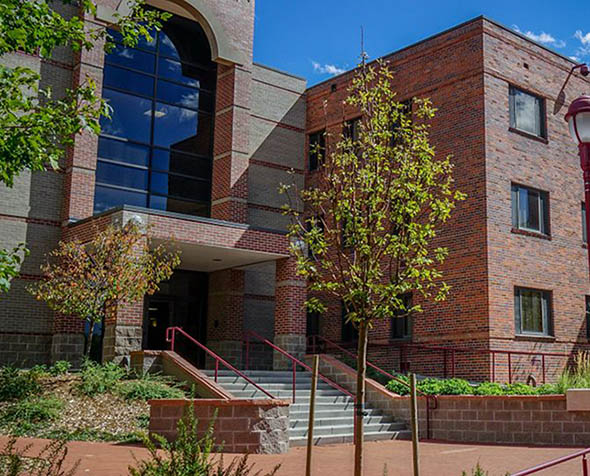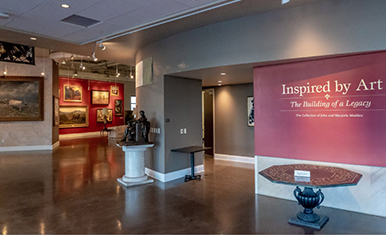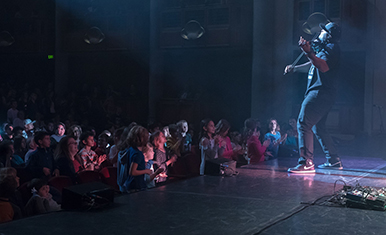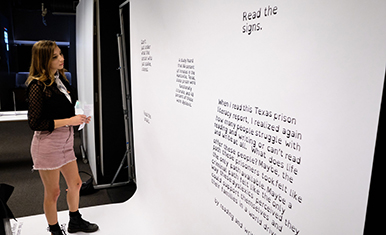Giving Thanks for the Power of Gratitude

In our already busy lives, Thanksgiving can feel more like a heaping helping of stress than a chance to relish genuine thankfulness. But adopting certain practices year-round can feed a sense of gratitude, reducing stress and enhancing wellbeing.
But first, what is gratitude? Does it depend on our social status or perception of personal wealth or abundance? And can nourishing our awareness and expression of thankfulness really improve mental health and our ability to handle stress?
“Gratitude is an emotion we feel when we receive something good that we value that goes above and beyond what is necessary or expected and we recognize that the giver of the gift did not give it for their own self-interest but for our benefit,” said Professor Danny McIntosh, Department of Psychology.
McIntosh currently teaches a class on the “psychology of thriving,” that asks students to submit a picture of someone or something they’re grateful for each week to initiate a habit of identifying and reflecting on gratitude.
“Gratitude doesn’t have to be to a specific person,” McIntosh said. “Research shows that a general recognition of how others support us can lead to gratitude.”
And although “gratitude is positively associated with measures of spirituality and religiosity, that doesn’t mean that if you’re not religious or spiritual you can’t be grateful,” McIntosh said. “The atheist writer Brian Peck talks about how if you stop and think about all the people contributing to a Thanksgiving meal you can end up feeling generally grateful.”
Enhancing a Sense of Well Being
What’s unique about the benefits of practicing gratitude compared to other practices like mindfulness? McIntosh said practicing gratitude showed little impact on physical health or psychopathology.
“You wouldn’t want to use gratitude as a fix for depression or anxiety or significant mental health issues,” he cautioned. “But in terms of happiness, positive emotions and quality of life, practicing gratitude does seem to have a positive influence across studies.”
The first step in practicing gratitude involves tuning into everyday experiences we could feel thankful for like a good cup of coffee, a beautiful sunset or a child’s smile. Second, we can learn to interpret our daily experiences as more of a gift. For example, “the person in the store who helped us in a way that went beyond the transactional,” McIntosh said, or “the person who let us in traffic who didn’t have to.”
Finally, we can consciously remember and feel gratitude for good things that people have given us.
How to Become More Grateful
Make a gratitude list. McIntosh suggests sitting down and listing all the things you’re grateful for. Even better, jot down some things you’re thankful for at the end of each day to make the benefits more powerful and long-lasting.
Reflect on something you’re grateful for. “Let’s say I’m grateful for my spouse or my best friend or the nice clerk in the store,” McIntosh said. “Reflect on the specific reasons you’re grateful to each.” If journaling comes easily to you, write out your reflections.
Express gratitude. “A number of studies have looked at the benefits of writing a gratitude letter to someone that says, ‘you did this thing for me; this is how it helped me and I want to let you know how important it was to me,’” McIntosh said. Write it by hand and, if possible, deliver it in person. Making a habit of writing heartfelt thank you notes likewise feeds the wellspring of gratitude.
Celebrating Gratitude
To integrate these practices into our Thanksgiving celebrations, McIntosh suggests that instead of the ritual of going around the table and having everyone say something they’re thankful for, we take a few minutes to list and privately reflect on what we’re truly thankful for before the celebration.
“Not everyone’s comfortable sharing out loud and there’s often a tendency to be artificial and surface about it,” McIntosh said. “Writing private lists is not as performative and helps set the tone for joining in real gratitude as we come together.”





